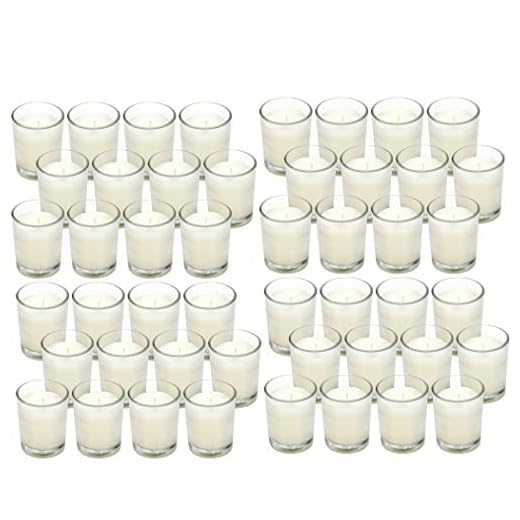



As a curious Scottish Fold, I often explore my surroundings, and that includes the enticing scents that waft through the air. However, I’ve learned that certain fragrance products can pose risks to my fellow furry friends. Research indicates that many items designed to create a pleasant atmosphere may contain harmful substances, especially for sensitive noses like mine.
It’s crucial to recognize that some ingredients found in popular aroma products can lead to respiratory issues or gastrointestinal distress in felines. Essential oils, frequently used in these products, can be particularly harmful. For example, oils like tea tree and citrus are known to be detrimental to cats, potentially causing symptoms ranging from drooling to more severe reactions.
When choosing fragrance options for your home, consider alternatives that prioritize safety. Opt for natural products that are specifically labeled as cat-friendly. Always ensure proper ventilation and keep any scented items out of reach. Being vigilant about the products you use can make a significant difference in maintaining a safe environment for us furry companions.
Safety of Popular Fragrance Products for Feline Friends
Products from this well-known brand may contain ingredients that can be harmful to my fellow felines. Always check for paraffin wax, synthetic fragrances, and essential oils, as these components can pose risks to our health.
Ingredients to Watch Out For
Common substances to avoid include:
| Ingredient | Potential Risk |
|---|---|
| Paraffin Wax | Can emit harmful fumes when burned |
| Synthetic Fragrances | May cause respiratory issues and allergic reactions |
| Essential Oils | Some are toxic to pets, leading to nausea or worse |
Before allowing these items in our living space, it’s wise to consult with a veterinarian. Keeping my environment safe matters most!
Understanding the Ingredients in Bath and Body Works Products
Familiarize yourself with the constituents found in these fragrant items to assess their safety for me and my furry friends. The primary components include wax, fragrance oils, and colorants. Each plays a distinct role in the overall experience.
- Wax: Typically, paraffin wax is used, which is derived from petroleum. Alternatives like soy or vegetable wax are more eco-friendly and might be safer for sensitive noses.
- Fragrance Oils: These are synthetic compounds designed to create enticing scents. Some can be irritating or harmful to animals, especially if inhaled in large quantities.
- Colorants: Added for visual appeal, these dyes may cause allergic reactions in some pets. Opting for products with natural colorants can be a safer choice.
Always check labels for specific additives or allergens. If you notice any unusual behavior in pets, it’s wise to discontinue use and consult a veterinarian. Simple steps can keep my environment safe while enjoying delightful aromas.
Potential Health Risks of Scented Products for Felines
It’s crucial to be cautious with fragrant items around us. Some ingredients in these products can irritate or harm sensitive respiratory systems of our feline companions. Essential oils commonly found in scented items, such as eucalyptus and tea tree oil, pose significant dangers, leading to symptoms like vomiting, tremors, or even liver damage. Always check labels for these components before lighting any wick.
Signs of Discomfort
If you notice excessive sneezing, coughing, or changes in behavior, it may indicate that your furry friend is struggling. Providing a well-ventilated area can help mitigate these effects. If symptoms persist, a trip to the vet is a wise choice.
Safe Alternatives
Instead of traditional aromatic items, consider using natural alternatives. Unscented soy wax options or those made from beeswax can create a cozy atmosphere without compromising health. Additionally, focusing on a safe environment, like choosing the best cat litter for sphynx cats, can contribute to overall well-being.
Signs of Fumes Exposure in Feline Friends
Watch for these signs if you suspect exposure to candle fumes:
- Respiratory Distress: Coughing, wheezing, or difficulty breathing may indicate irritation.
- Gastrointestinal Issues: Vomiting or diarrhea can occur from inhaling harmful substances.
- Excessive Salivation: If I notice drooling without any apparent reason, it could signal a problem.
- Behavioral Changes: Lethargy, hiding, or sudden aggression may signify discomfort.
- Allergic Reactions: Itchy skin, swelling, or rashes are signs of an allergic response.
Monitoring My Health
It’s crucial to keep an eye on how I’m acting after exposure. If symptoms persist or worsen, a trip to the vet is essential. Always prioritize my well-being!
Preventive Measures
To reduce risks, consider the following:
- Avoid lighting candles in areas where I spend time.
- Opt for unscented alternatives or natural options known to be safe.
- Ensure good ventilation when using scented products.
Staying alert to these signs helps keep me healthy and happy!
Alternatives to Scented Products for Cat Owners
For those of us who share our home with feline friends, it’s essential to consider options that keep our space pleasant without compromising their health. One great alternative is using unscented soy or beeswax options. These burn cleaner and produce less soot, making them safer for us and our furry pals.
Essential Oil Diffusers
Using essential oil diffusers with pet-safe oils can create a calming atmosphere. Oils like lavender and chamomile are generally considered safe in low concentrations. Always consult with a vet before introducing any new scents to ensure your companion’s well-being.
Natural Air Fresheners
Homemade air fresheners can be a fun and safe way to keep your space smelling fresh. Combine water with ingredients like lemon slices, cinnamon sticks, or even fresh herbs. Just simmer on the stove or place in a bowl to release the aroma without harmful additives.
Another option is using baking soda. Place an open container in areas that need freshening up; it absorbs odors naturally. Keeping your litter box clean also helps maintain a pleasant environment.
By opting for these alternatives, you can enjoy a lovely-smelling home while ensuring that your four-legged companions remain happy and healthy.
How to Safely Use Candles Around Cats
Keep all lighting sources out of reach. Elevated surfaces prevent accidental knocks and curious paws from reaching them. Consider using holders that are heavy enough to resist tipping over.
Opt for unscented varieties or those specifically labeled as pet-safe. This minimizes the risk of irritants that could affect my sensitive nose and lungs.
Ensure proper ventilation in your space. Open windows or use air purifiers to disperse any potential fumes, which helps create a healthier environment for both of us.
Monitor your human when they light one. Stay close to check for any signs of discomfort, like sneezing or coughing. If I show any unusual behavior, it’s time to extinguish the flame.
Set a timer to remind your human to put them away after use. Leaving them unattended can be dangerous, especially if I decide to investigate the flickering light.
For a cozy glow without the hazards, explore alternatives like LED lights or diffusers that use safe oils. These options provide ambiance without the risks associated with burning.
Always research new products thoroughly. Some may have ingredients that could be harmful. If unsure, consult a vet to clarify any doubts before introducing anything new into our home.
In case of any health concerns, keep emergency contacts handy. Knowing where to turn for help can make all the difference in ensuring my well-being.
For additional information on household safety, check out this article about can low water pressure damage a washing machine.
Veterinary Recommendations for Cat Owners
Keep your living space well-ventilated. Fresh air helps reduce the concentration of any harmful substances that might be released. If you choose to use fragrant items, open windows or use fans to circulate air.
Opt for unscented alternatives or natural products made specifically for pets. Many options exist that provide ambiance without the risk of harmful chemicals.
Consult a veterinarian before introducing any new products into your home. They can provide guidance tailored to your pet’s specific needs and sensitivities.
Monitor your feline closely for any signs of distress or discomfort when using scented items. If any unusual behavior occurs, discontinue use immediately and seek professional advice.
Educate yourself about the ingredients in products you use. Understanding what goes into these items helps you make informed choices that prioritize your furry friend’s safety.
Consider using electric diffusers with pet-safe oils if you want a pleasant scent. These can disperse fragrances without the combustion risks associated with traditional options.
Keep all scented products out of reach. Ensure that your playful companion cannot access them, as curiosity can lead to unintended consequences.
Lastly, maintain regular veterinary checkups. Routine visits help ensure overall health and allow for early detection of any potential issues related to environmental exposures.







